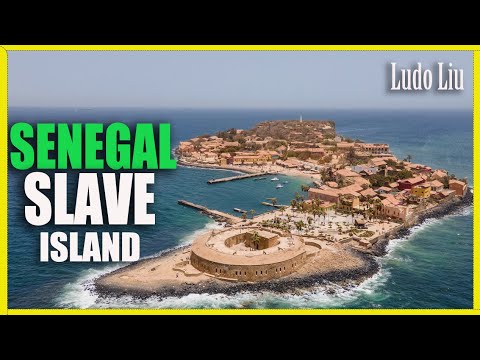
Nestled off the coast of Senegal, lies a small island with a monumental history that has rippled across oceans and generations. Goree Island, or Île de Gorée, is an emblem of the human spirit’s endurance and a poignant reminder of humanity’s darkest chapters. In recent years, the experience of visiting this historic site has been enriched by technology, allowing visitors to explore its legacy through stunning 4K visual presentations that bring a vivid clarity to its haunting past.
### The History of Goree Island
Goree Island serves as a symbol and memorial to the Atlantic Slave Trade. Despite its tranquil appearance today, with colorful colonial buildings and narrow alleyways lined with basalt rocks, it was once one of the largest slave-trading centers on the African coast from the 15th to the 19th century. Its strategic location made it an ideal commercial hub for European traders.
The most iconic site on Goree is the House of Slaves (Maison des Esclaves). Built in 1786, this red building with its striking façade is believed to have been one of the last slave houses on the island. The ‘Door of No Return’, a narrow opening facing the Atlantic Ocean, symbolically represents the final exit point for millions of Africans who were shipped away from their homeland into slavery across the Americas.
### A New Perspective in 4K
The introduction of ultra-high-definition 4K video technology has transformed how visitors perceive and understand Goree Island. Filmmakers and documentarians are now able to capture the intricate details and vibrant life on this island with unprecedented clarity. These visuals are not just enhancing visitor experience but are also crucial educational tools that bring this historical narrative to audiences globally.
Through 4K documentaries and virtual tours, viewers can see close-up images of the aging bricks in slave quarters or notice subtle nuances in expressions during guided tours – all contributing to a more engaging and empathetic understanding. These visual stories help bridge historical gaps, making distant pasts accessible and comprehensible.
### Goree Today: A Center for Reconciliation
Today, Goree Island stands as a site for reconciliation and collective healing. It is designated as a UNESCO World Heritage Site for its historical significance and serves as both a tourist destination and pilgrimage site for those seeking connection with their ancestral heritage.
Annual events like commemorations and cultural festivals also take place here, celebrating African resilience and creativity while educating visitors about history’s impact on present-day racial inequities. Artists from around Africa gather here too; their work inspired by themes around identity, liberation, and remembrance.
### Visiting Goree Island
For travelers planning a visit, they can explore several museums like The Historical Museum of Senegal or The Women’s Museum which delve deeper into local history including indigenous cultures prior to colonization. Walking tours around Goree often include intimate stories shared by locals which are not typically found in textbooks – another layer revealed by high-resolution imaging which shows not just places but faces filled with history.
Moreover, viewing Gorée through high-definition footage allows those unable to visit physically an opportunity to experience its profound atmosphere remotely – breaking barriers of distance through leaps in visual technology.
### Conclusion
Goree Island is more than just an entry in a tourist brochure; it’s a living museum dedicated to memory preservation about our shared global heritage that transcends geographical boundaries. Enhanced by modern storytelling tools like 4K video technology, it offers us all – regardless of lineage – insight into both historical atrocities against humanity alongside enduring lessons about strength amidst adversity.
